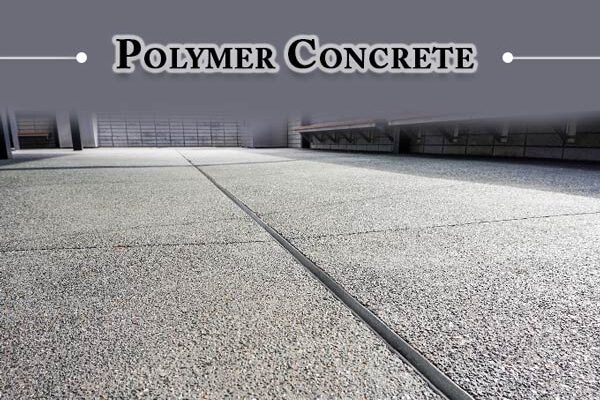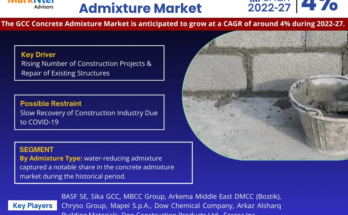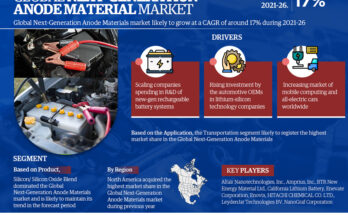Global Polymer Concrete Market has valued at USD452.6 million in 2022 and is anticipated to project robust growth in the forecast period with a CAGR of 6.72% through 2028. Polymer concrete is a mixture composed of man-made organic polymer acting as a binder. This mixture is created through the process of polymerization of a combination of monomers and aggregates. The polymerized monomer serves as the binder for the aggregates and the resulting composite.
The traditional Portland cement is completely substituted by plastic resin concrete or synthetic resin concrete, which is then combined with a hardening agent, sand, gravel, filter, or quartz powder. The chemical composition of this material exhibits a range of characteristics, including high load-bearing strength, high compressive strength, rapid curing, high resistance to chemical attacks and abrasion, and low permeability. The global demand for polymer concrete technology is predicted to increase due to several factors, including superior mechanical properties, a growing need for construction materials that are resistant to chemicals, a rise in awareness for environmentally friendly concrete, and reduced installation time.
Key Market Drivers
Growing Demand for Polymer Concrete in the Transportation Industry
With the need for reliable and durable infrastructure, the demand for high-performance construction materials has increased. Polymer concrete a composite material which are made from resins and aggregates, has emerged as a revolutionary development in the transportation industry. Polymer concrete exhibits improved resistance to wear and tear, reducing the need for frequent repairs and replacements. This characteristic has made it an attractive option for building roads, bridges, airport runways, and other transportation infrastructure. Polymer concrete’s resistance to corrosion makes it an ideal choice for structures like bridge decks, where protection against salt-induced damage is crucial. Its non-porous nature prevents the penetration of water and harmful substances, ensuring a longer service life and reducing maintenance costs.
Growth in Construction Demands
The construction industry is witnessing a remarkable surge in demand worldwide, driven by urbanization, population growth, and infrastructure development. This boom in construction activities has led to an increased demand for advanced building materials that offer durability, versatility, and sustainability. Polymer concrete has emerged as one such innovative material that is revolutionizing the construction sector. With its exceptional properties and diverse applications, polymer concrete is becoming a driving force behind the growth of the global construction industry. Polymer concrete is a composite material that combines aggregates (such as sand and stone) with a polymer resin, instead of the traditional cement binder used in conventional concrete.
The polymer resin, which is typically composed of epoxy, polyester, or vinyl ester, acts as a binding agent, imparting enhanced strength and chemical resistance to the final product. This unique combination results in a material that is not only highly durable but also resistant to various corrosive elements, making it well-suited for demanding construction applications. Its high strength-to-weight ratio, excellent durability, and resistance to chemical degradation make it ideal for applications in harsh environments, such as industrial facilities, wastewater treatment plants, and marine structures. Additionally, its lower permeability minimizes water absorption, preventing cracks and prolonging the material’s lifespan, reducing maintenance costs significantly.
Aging infrastructure, especially in developed countries, necessitates extensive repair and rehabilitation work. Polymer concrete’s ability to bond well with existing concrete surfaces and its superior performance in aggressive environments make it a top choice for infrastructure repair projects, helping to extend the service life of structures and reduce the overall maintenance burden. The material’s versatility allows for the creation of intricate and lightweight designs, making it highly desirable in architectural applications, artistic structures, and urban furniture. Furthermore, polymer concrete’s non-reactive nature also makes it suitable for electrical and electronic applications whereas traditional concrete is unsuitable due to conductivity issues.
Growing Awareness for Sustainable Concrete
In recent years, there has been a significant surge in global awareness about the importance of sustainability in construction materials. The concrete industry, in particular, has been under scrutiny due to its substantial environmental impact. As a result, polymer concrete, a sustainable and eco-friendly alternative, has emerged as a prominent solution, leading to the growth of the global polymer concrete market. Polymer concrete, also known as resin concrete, is a sustainable substitute for conventional concrete. It is a composite material that uses a thermosetting resin, such as epoxy or polyester, as a binder instead of cement. One of the main advantages of polymer concrete is its significantly reduced carbon footprint compared to traditional concrete. By replacing cement with resins, the production process emits fewer greenhouse gases, thereby helping to combat climate change. The production of polymer concrete requires less energy than conventional concrete, further lowering its environmental impact and contributing to sustainability efforts. The versatility of polymer concrete allows for unique design possibilities. It can be easily molded into various shapes and sizes, promoting innovation and architectural creativity.
Download FREE Sample Report @ https://www.techsciresearch.com/sample-report.aspx?cid=2225
Key Market Challenges
Limited Material Availability and Supply Chain Constraints
The production of polymer concrete heavily relies on resins, which are derived from petrochemical feedstocks. Fluctuations in the availability of these feedstocks can affect resin production, leading to potential shortages in the market. Moreover, competition for resins from other industries, such as coatings and adhesives, can further strain the supply chain. The selection of suitable mineral aggregates is crucial to the performance of polymer concrete. However, not all regions have abundant access to high-quality aggregates. Transportation costs for sourcing aggregates from distant locations can add to the overall production expenses. The production of polymer concrete involves precise formulations and controlled processes. Delays in resin or aggregate deliveries can disrupt manufacturing schedules, leading to production bottlenecks and potential project delays. Logistical challenges, such as inadequate transportation infrastructure or unforeseen events (e.g., natural disasters), can impede the timely delivery of products to customers. The polymer concrete market consists of numerous small and medium-sized manufacturers, each catering to specific regions or niches. This market fragmentation can hinder economies of scale and limit the scope for streamlining the supply chain.
Lack of trained professionals and skilled labor
Despite the promising growth of the polymer concrete market, a shortage of trained professionals and skilled labor has emerged as a significant challenge. The lack of specialized training programs creates a void in the workforce, resulting in a deficiency of individuals equipped with the necessary knowledge and skills to effectively work with this advanced material. Polymer concrete continues to be a specialized field within the broader construction and materials sector. Consequently, professionals often lack awareness of the opportunities and benefits that come with working in this niche area. Poly concrete is a relatively recent development in comparison to traditional concrete, resulting in a scarcity of experienced professionals capable of mentoring and guiding the next generation of workers in this field.
Key Market Trends
Growing Infrastructure Investments in Developing Economies
The global polymer concrete market is experiencing a noteworthy trend fueled by the growing infrastructure investments in these economies. Polymer concrete, a composite material that combines polymers aggregates, is emerging as a crucial player in contemporary construction projects, providing improved durability, flexibility, and longevity. As populations grow, cities expand, and industries thrive, the demand for resilient and sustainable infrastructure becomes paramount. Developing economies are making significant investments in expansive transportation networks, encompassing highways, bridges, railways, and airports. Polymer concrete, renowned for its exceptional strength, resistance to wear and tear, and capacity to withstand heavy traffic loads, emerges as an optimal choice for the construction of robust and enduring transportation infrastructure. Polymer concrete is gaining traction in the construction of affordable housing projects due to its cost-effectiveness, ease of installation, and resistance to weathering. Developing economies are leveraging these benefits to meet the housing needs of their growing populations. As industries continue to grow, there is an increasing demand for energy and industrial facilities. Polymer concrete’s exceptional thermal stability, chemical resistance, and mechanical strength make it an ideal material for constructing industrial floors, storage tanks, and energy infrastructure.
Integration of Nanotechnology
The global construction industry is experiencing a paradigm shift towards innovative materials and technologies that enhance the durability, strength, and sustainability of structures. Nanotechnology involves the manipulation and control of materials at the nanoscale. When incorporated into polymer concrete, nanomaterials like nanoparticles, nanofibers, and nanotubes provide significant enhancements to the mechanical, thermal, and durability properties of the material. This integration capitalizes on the distinctive characteristics displayed by nanoparticles, such as their high surface area-to-volume ratio and quantum effects, enabling the creation of polymer concrete with exceptional performance. Nanoparticles, when dispersed within polymer matrices, significantly enhance the mechanical properties of polymer concrete. They improve tensile, compressive, and flexural strengths, making structures more resistant to heavy loads, impacts, and vibrations. Nanoparticles fill microscopic gaps in the polymer matrix, creating a denser structure that enhances resistance to chemical attacks, UV radiation, and harsh environmental conditions. Incorporating nanomaterials into polymer concrete enhances its thermal and electrical conductivity, making it suitable for applications requiring heat dissipation or electromagnetic shielding. Nanotechnology enables the reduction of material weight, while upholding structural integrity. This advancement fosters sustainable construction practices and mitigates environmental impact. In architectural applications, lightweight nanotech-enhanced polymer concrete panels are being used for facades and decorative elements, providing both aesthetic appeal and sustainable construction.
Related Reports
Carbon Fiber Prepreg Market {2028} – Industry Trends, Share & Forecast
India Bulk Oxygen Market {2030}: Trends & Forecast
Table of Content
Product Overview
1.1. Market Definition
1.2. Scope of the Market
1.2.1. Markets Covered
1.2.2. Years Considered for Study
1.2.3. Key Market Segmentations
- Research Methodology
2.1. Objective of the Study
2.2. Baseline Methodology
2.3. Key Industry Partners
2.4. Major Association and Secondary Sources
2.5. Forecasting Methodology
2.6. Data Triangulation & Validation
2.7. Assumptions and Limitations
- Executive Summary
3.1. Overview of the Market
3.2. Overview of Key Market Segmentations
3.3. Overview of Key Market Players
3.4. Overview of Key Regions/Countries
3.5. Overview of Market Drivers, Challenges, Trends
- Voice of Customer
- Global Polymer Concrete Market Outlook
5.1. Market Size & Forecast
5.1.1. By Value
5.2. Market Share & Forecast
5.2.1. By Type (Epoxy, Methyl Methacrylate & Others)
5.2.2. By Class (Polymer Modified Concrete & Other)
5.2.3. By Binding Agent (Natural Resin & Synthetic Resin)
5.2.4. By Application (Containments, Pump Bases, Waste Containers, Flooring Blocks, Trench Drains, Others)
5.2.5. By End User Industry (Non-residential structures, Infrastructure, Residential)
5.2.6. By Region
5.2.7. By Company (2022)
5.3. Market Map
- North America Polymer Concrete Market Outlook
6.1. Market Size & Forecast
6.1.1. By Value
6.2. Market Share & Forecast
6.2.1. By Type
6.2.2. By Class
6.2.3. By Binding Agent
6.2.4. By Application
6.2.5. By End User Industry
6.2.6. By Country
6.3. North America: Country Analysis
6.3.1. United States Polymer Concrete Market Outlook
6.3.1.1. Market Size & Forecast
6.3.1.1.1. By Value
6.3.1.2. Market Share & Forecast
6.3.1.2.1. By Type
6.3.1.2.2. By Class
6.3.1.2.3. By Binding Agent
6.3.1.2.4. By Application
6.3.1.2.5. By End User Industry
6.3.2. Mexico Polymer Concrete Market Outlook
6.3.2.1. Market Size & Forecast
6.3.2.1.1. By Value
6.3.2.2. Market Share & Forecast
6.3.2.2.1. By Type
6.3.2.2.2. By Class
6.3.2.2.3. By Binding Agent
6.3.2.2.4. By Application
6.3.2.2.5. By End User Industry
6.3.3. Canada Polymer Concrete Market Outlook
6.3.3.1. Market Size & Forecast
6.3.3.1.1. By Value
6.3.3.2. Market Share & Forecast
6.3.3.2.1. By Type
6.3.3.2.2. By Class
6.3.3.2.3. By Binding Agent
6.3.3.2.4. By Application
6.3.3.2.5. By End User Industry
- Europe Polymer Concrete Market Outlook
7.1. Market Size & Forecast
7.1.1. By Value
7.2. Market Share & Forecast
7.2.1. By Type
7.2.2. By Class
7.2.3. By Binding Agent
7.2.4. By Application
7.2.5. By End User Industry
7.2.6. By Country
7.3 Europe: Country Analysis
7.3.1. France Polymer Concrete Market Outlook
7.3.1.1. Market Size & Forecast
7.3.1.1.1. By Value
7.3.1.2. Market Share & Forecast
7.3.1.2.1. By Type
7.3.1.2.2. By Class
7.3.1.2.3. By Binding Agent
7.3.1.2.4. By Application
7.3.1.2.5. By End User Industry
7.3.2. Germany Polymer Concrete Market Outlook
7.3.2.1. Market Size & Forecast
7.3.2.1.1. By Value
7.3.2.2. Market Share & Forecast
7.3.2.2.1. By Type
7.3.2.2.2. By Class
7.3.2.2.3. By Binding Agent
7.3.2.2.4. By Application
7.3.2.2.5. By End User Industry
7.3.3. United Kingdom Polymer Concrete Market Outlook
7.3.3.1. Market Size & Forecast
7.3.3.1.1. By Value
7.3.3.2. Market Share & Forecast
7.3.3.2.1. By Type
7.3.3.2.2. By Class
7.3.3.2.3. By Binding Agent
7.3.3.2.4. By Application
7.3.3.2.5. By End User Industry
7.3.4. Italy Polymer Concrete Market Outlook
7.3.4.1. Market Size & Forecast
7.3.4.1.1. By Value
7.3.4.2. Market Share & Forecast
7.3.4.2.1. By Type
7.3.4.2.2. By Class
7.3.4.2.3. By Binding Agent
7.3.4.2.4. By Application
7.3.4.2.5. By End User Industry
7.3.5. Spain Polymer Concrete Market Outlook
7.3.5.1. Market Size & Forecast
7.3.5.1.1. By Value
7.3.5.2. Market Share & Forecast
7.3.5.2.1. By Type
7.3.5.2.2. By Class
7.3.5.2.3. By Binding Agent
7.3.5.2.4. By Application
7.3.5.2.5. By End User Industry



